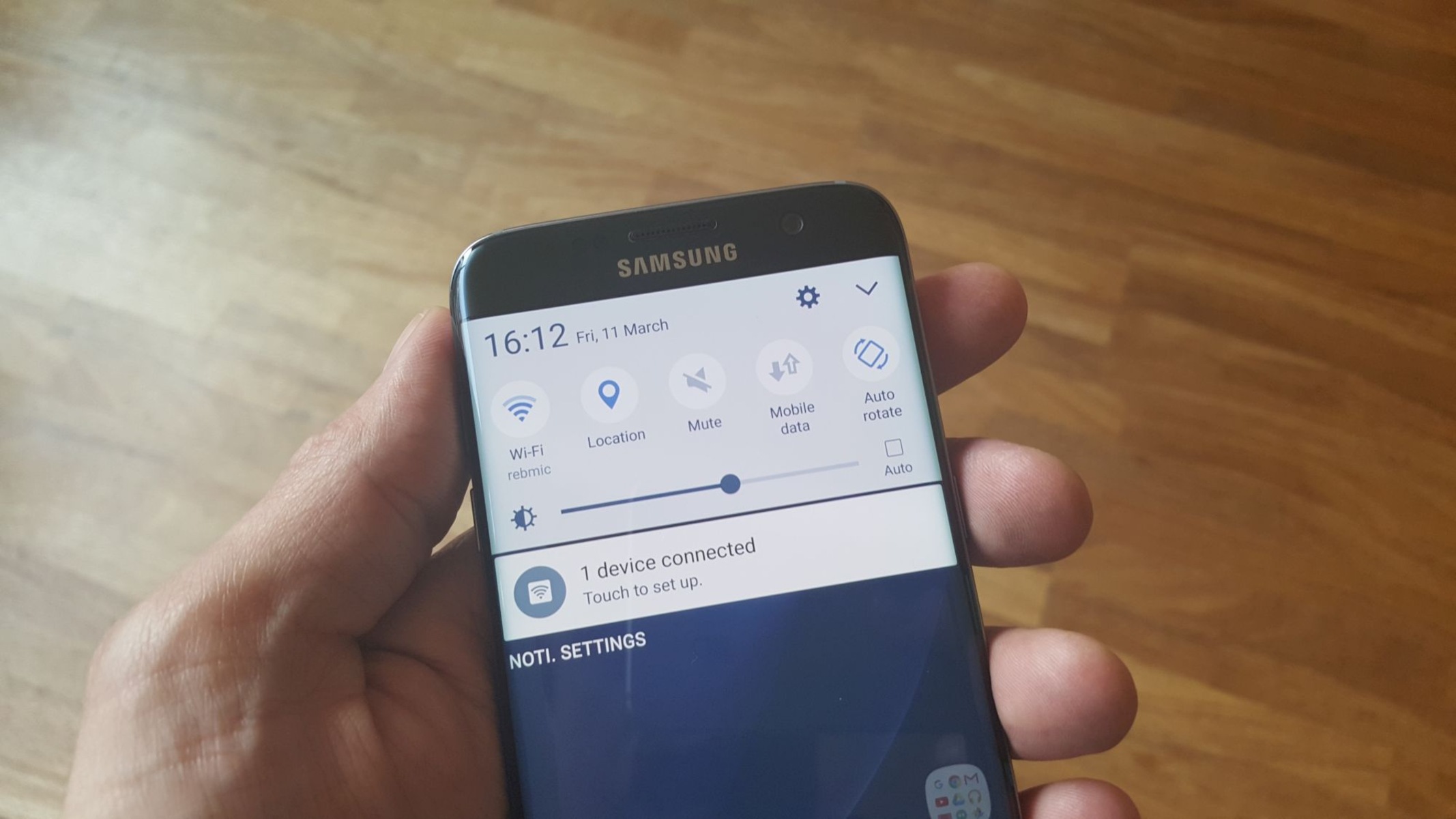Introduction
Smart devices have become an integral part of our daily lives, offering convenience, efficiency, and connectivity at our fingertips. Among these devices, the Echo Dot and the Galaxy S7 stand out as popular choices in the realm of smart home technology and mobile communication. However, users may encounter a perplexing recommendation from the Echo Dot to disable the Smart Network Switch on their Galaxy S7. This seemingly contradictory advice prompts a closer examination of the Smart Network Switch feature and its interaction with the Echo Dot.
The Echo Dot, a voice-controlled smart speaker, is designed to seamlessly integrate with various smart home devices, including smartphones. On the other hand, the Galaxy S7, a flagship smartphone from Samsung, boasts advanced features, including the Smart Network Switch, aimed at optimizing network connectivity. Understanding the rationale behind the Echo Dot's suggestion to disable this feature requires delving into the functionality of the Smart Network Switch and its potential implications on the user experience.
As the intersection of smart home technology and mobile devices continues to evolve, it is crucial for users to comprehend the intricacies of these interconnected systems. In this article, we will explore the Smart Network Switch on the Galaxy S7, uncover the reasons behind the Echo Dot's recommendation to disable it, address potential issues associated with this feature, and provide a comprehensive guide on how to turn off the Smart Network Switch. By shedding light on these aspects, users can make informed decisions to enhance their overall smart home and mobile device experience. Let's delve into the intricacies of the Smart Network Switch and its interaction with the Echo Dot to unravel the rationale behind this perplexing recommendation.
What is the Smart Network Switch on Galaxy S7?
The Smart Network Switch feature on the Galaxy S7 is designed to provide a seamless and uninterrupted network connection for users. When enabled, this feature allows the device to automatically switch between Wi-Fi and mobile data networks based on the signal strength and quality. This functionality aims to ensure a consistent and reliable network connection, especially in scenarios where the Wi-Fi signal may be weak or unstable.
By leveraging the Smart Network Switch, the Galaxy S7 can seamlessly transition between Wi-Fi and mobile data, thereby optimizing the user’s network experience. This automated switching mechanism is intended to minimize disruptions in network connectivity, allowing users to stay connected without manual intervention. Additionally, the Smart Network Switch is engineered to prioritize network stability, ensuring that users can access online content, stream media, and communicate seamlessly without experiencing network-related interruptions.
Moreover, the Smart Network Switch is equipped with intelligent algorithms that evaluate the quality of available networks, enabling the Galaxy S7 to make informed decisions regarding network switching. This proactive approach aims to enhance the user experience by maintaining a consistent and reliable network connection, ultimately contributing to a smoother and more efficient usage of the device’s network capabilities.
Understanding the functionality and purpose of the Smart Network Switch is essential for users seeking to optimize their network connectivity on the Galaxy S7. While this feature offers the convenience of automated network switching, its interaction with other smart devices, such as the Echo Dot, may introduce complexities that warrant further exploration. By gaining insight into the Smart Network Switch’s capabilities, users can make informed decisions regarding its utilization and its compatibility with other smart home devices.
Why Does Echo Dot Recommend Turning Off Smart Network Switch?
The recommendation from the Echo Dot to disable the Smart Network Switch on the Galaxy S7 may seem perplexing at first glance. However, the rationale behind this suggestion lies in the interaction between the Smart Network Switch and the Wi-Fi connectivity requirements of the Echo Dot. The Echo Dot, as a smart home device, relies on a stable and consistent Wi-Fi connection to function optimally. When the Smart Network Switch is enabled on the Galaxy S7, it automatically switches between Wi-Fi and mobile data networks based on signal strength and quality. This automated switching mechanism, while beneficial for seamless network connectivity on the smartphone, may introduce intermittent disruptions in the Wi-Fi connection required by the Echo Dot.
By recommending the disabling of the Smart Network Switch, the Echo Dot aims to ensure a continuous and uninterrupted Wi-Fi connection for seamless interaction with the device. This recommendation aligns with the Echo Dot’s reliance on a stable Wi-Fi connection to facilitate voice commands, music streaming, smart home control, and other connected functionalities. Disabling the Smart Network Switch prevents the Galaxy S7 from automatically switching away from Wi-Fi, thereby maintaining a consistent connection for the Echo Dot to operate without interruptions.
It is important to note that the recommendation to disable the Smart Network Switch is specific to the interaction between the Galaxy S7 and the Echo Dot, emphasizing the need for a stable Wi-Fi connection to support the functionalities of the smart speaker. While the Smart Network Switch offers benefits for seamless network switching on the smartphone, its automated behavior may conflict with the connectivity requirements of certain smart home devices, necessitating a tailored approach to network management.
Understanding the underlying reasons for the Echo Dot’s recommendation sheds light on the intricacies of managing network connectivity across interconnected smart devices. By considering the unique requirements of each device within the smart home ecosystem, users can optimize their network settings to accommodate the diverse connectivity needs of their devices, ensuring a harmonious and uninterrupted user experience.
Potential Issues with Smart Network Switch
While the Smart Network Switch on the Galaxy S7 offers the convenience of automated network switching, it may present potential issues that users should consider. One of the primary concerns associated with the Smart Network Switch is the possibility of unintended network disruptions, particularly in scenarios where the automatic switching behavior interferes with the connectivity requirements of specific smart devices within the user’s ecosystem.
Furthermore, the automated nature of the Smart Network Switch may lead to instances where the device switches between Wi-Fi and mobile data networks more frequently than desired, potentially impacting data usage and network performance. This behavior can be particularly problematic for users with limited mobile data plans, as frequent switches to mobile data may result in higher data consumption and associated costs.
Another potential issue arises from the Smart Network Switch’s reliance on signal strength and quality as the primary criteria for network switching. In some cases, the feature may prioritize a mobile data network with a stronger signal over a Wi-Fi network, even if the user’s intention is to conserve mobile data usage. This behavior can lead to unexpected data usage patterns and may not align with the user’s preferences for network connectivity.
Moreover, the Smart Network Switch’s automated switching may introduce latency or interruptions in network-dependent activities, such as VoIP calls, streaming media, or online gaming, as the device transitions between networks. These disruptions can impact the user experience, especially in real-time communication and multimedia streaming scenarios where network stability is crucial.
By acknowledging these potential issues, users can make informed decisions regarding the utilization of the Smart Network Switch and its compatibility with their specific smart home devices. Understanding the implications of this feature empowers users to tailor their network settings to align with the connectivity requirements of their devices, mitigating potential issues and optimizing the overall user experience within their smart home ecosystem.
How to Turn Off Smart Network Switch on Galaxy S7
For users who wish to disable the Smart Network Switch feature on their Galaxy S7, the process is straightforward and can be accomplished through the device’s settings. Follow the steps below to turn off the Smart Network Switch:
- Unlock your Galaxy S7 and access the home screen.
- Swipe down from the top of the screen to open the notification panel, and then tap the gear-shaped “Settings” icon to access the device settings.
- Within the Settings menu, scroll down and select “Connections” to manage network-related settings.
- Tap on “Wi-Fi” to access the Wi-Fi settings and networks available for connection.
- Next, tap the three-dot menu icon in the top-right corner of the screen to open additional options.
- From the menu, select “Advanced” to access advanced Wi-Fi settings on the device.
- Scroll down to locate and tap on “Smart Network Switch” to access its settings.
- Toggle the switch next to “Smart Network Switch” to turn off the feature. When the switch turns gray, the Smart Network Switch is disabled.
- Exit the settings menu and return to the home screen.
Once the Smart Network Switch is disabled, the Galaxy S7 will no longer automatically switch between Wi-Fi and mobile data networks based on signal strength and quality. This manual configuration allows users to maintain a consistent network connection without the automated behavior of the Smart Network Switch.
It is important to note that by turning off the Smart Network Switch, users take full control of their network connectivity and can prioritize their preferred network type based on their specific usage patterns and device requirements. This manual approach empowers users to tailor their network settings to align with the connectivity needs of their smart home devices, ensuring a seamless and uninterrupted user experience.
Conclusion
The interaction between the Echo Dot and the Galaxy S7’s Smart Network Switch sheds light on the complexities of managing network connectivity within a smart home ecosystem. While the Smart Network Switch offers the convenience of automated network switching, its interaction with specific smart devices, such as the Echo Dot, may introduce complexities that warrant consideration.
Understanding the rationale behind the Echo Dot’s recommendation to disable the Smart Network Switch illuminates the importance of maintaining a stable and uninterrupted Wi-Fi connection for smart home devices to operate optimally. By recognizing the specific connectivity requirements of each smart device, users can tailor their network settings to accommodate diverse needs, ensuring a harmonious and seamless user experience.
Exploring the potential issues associated with the Smart Network Switch underscores the significance of informed network management. Users can mitigate unintended disruptions and optimize their network settings by considering the implications of the Smart Network Switch’s automated behavior, particularly in scenarios where it may conflict with the connectivity requirements of specific smart devices.
Furthermore, the guide on how to turn off the Smart Network Switch empowers users to take control of their network connectivity, allowing for manual configuration to align with their preferences and device requirements. This hands-on approach enables users to prioritize network stability and tailor their network settings to support the seamless operation of their smart home devices.
As the landscape of smart home technology continues to evolve, users are encouraged to delve into the intricacies of network management, ensuring that their devices operate harmoniously within their interconnected ecosystem. By understanding the nuances of network connectivity and the interaction between smart devices, users can optimize their network settings to support a seamless, uninterrupted, and tailored smart home experience.

























